Electric mountain bike purchasing advice: how to choose the right product
- What you need to know
- E-mountain bikes are electrically assisted bicycles designed for off-road use.
- They can come with either full suspension or only front suspension forks (hardtail).
- The motor only runs when you pedal – if the battery power runs out, you can still pedal home.
- When buying an e-bike, it is important to consider not only frame size, but also the maximum weight it can hold, the weight of the bike itself, the motor, gears, battery capacity and brakes.
Fast off-roading
E-bikes now come in loads of different shapes and styles. Electric mountain bikes are one of these varieties. Put simply, they are off-road bikes with inbuilt electric motors. They have extremely sturdy frames with wide and grippy tires, meaning they can cope with virtually any riding surface.
Thanks to the motor, no hill is too steep for electric mountain bike riders. With a normal MTB, some uphill trails are only beatable by super fit athletes. With an E-MTB however, these tricky conditions can be surmounted by most people. Electric mountain bikes also perform well downhill, as they have powerful disc brakes.
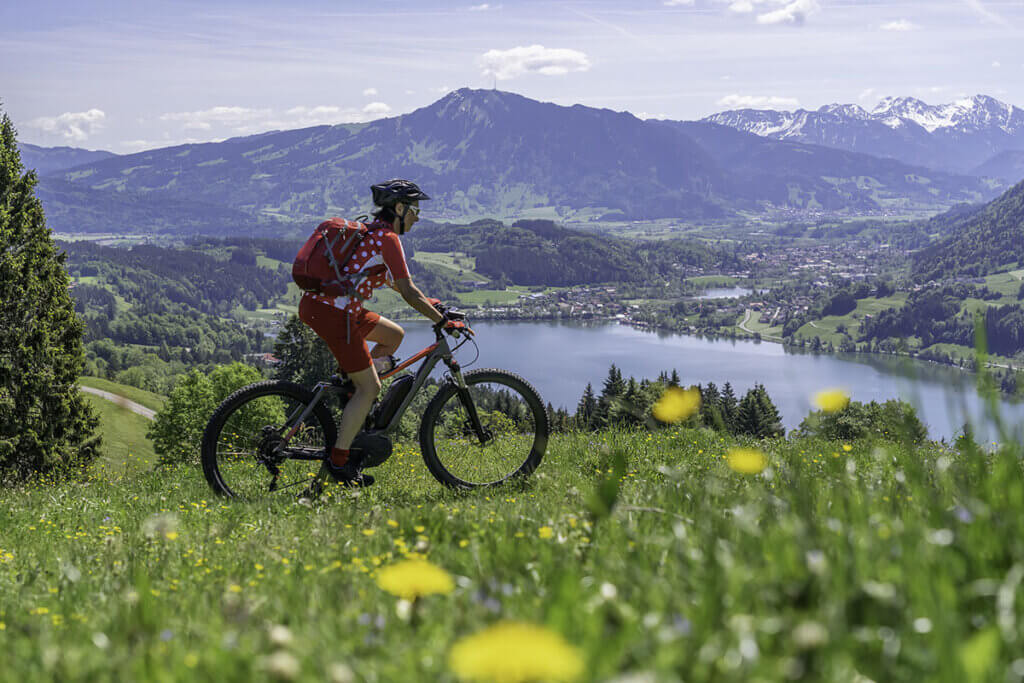
Electric mountain bikes aren’t just limited to off-road use – they are a great option for longer bike tours as well as family outings. They are legal for riding on the road, and most don’t require a special license as their motors are pedal assisted rather than power-on-demand with a throttle like a moped or motorbike. When riding on the road, you can also turn the motor off if it isn’t needed – like when going downhill. A lot of models have multiple power levels, so you can choose how hard you want to pedal.
Well-known brands
Scott | Focus | Trek | Specialized | Cube
Electric bike classes
Just as with normal electric bikes, there are three main types of electric motor systems on electric mountain bikes. People often use e-bike to refer to all three types, but there are some distinct technical differences, as detailed below.
E-bikes
E-bikes are bicycles with integrated motors that can be turned on and off as desired, mostly via a throttle. The motor is separate from the bottom bracket, which means it can run even when you aren’t pedaling. As a result, this style of an electric bike is more akin to a moped – they just look like bicycles. This means that they need to be registered for road use, require a license, and have a speed limiter. This type of electric bike is relatively rare.
Advantages
- Motor works without pedaling
Disadvantages
- Need to be registered
- Limited choice of models
- Speed limiter
Pedelecs
Pedelecs are the most common type of electric bicycle. They are what a lot of people are referring to when they talk about ‘e-bikes’. Their name is a contraction of pedal electric cycle. The motor on a pedelec is only activated when the rider pedals. They have a speed limiter, which depends on the rules of the country you are in, but in most countries it is 15.5 mph (25 km/h). You can ride faster than this limiter on the motor, but it all has to come from your own legs. Most models have motors with different levels of power, and they can also be switched off entirely and ridden as a normal bike. You can ride them on the road without any extra licenses or registration as they are legally classed as bicycles.
Advantages
- Adjustable motor power
- No extra license required
- Suitable for all kinds of bike rides
Disadvantages
- Heavy
- Expensive
S-Pedelecs
S-Pedelecs are basically just fast pedelecs. They have a higher speed limit, often up to 28 mph (45 km/h), which also means they sit in a different legal category. To ride one, you need a license, insurance, and helmet. They also aren’t usually permitted on cycle paths.
Advantages
- Extremely fast
Disadvantages
- Can’t be ridden on cycle paths
- License required
What an e-bike needs
Suspension
Since they are designed to be used on off-road terrain, one of the most important features on any electric mountain bike is the suspension. Front suspension forks are standard on all models. They absorb shocks and dampen any bumps, making riding over rough terrain much smoother. You can often tighten or deactivate the suspension when riding on flat roads. Full suspension bikes have extra shock absorbers in the rear triangle, while hardtail bikes only have a front suspension fork.
Hardtails
Hardtail bikes are great for casual rides in fields or on forest paths. They perform well on roads and smoother surfaces as the rigid frame offers improved speed. Hardtails also tend to be lighter than full suspension bikes, as they have less components. This also means they tend to be a bit cheaper.
Full suspension bikes
If you’re planning on bombing down trails on a regular basis, then a full suspension bike is right for you. Along with the front fork, these bikes have rear suspension. This means the rear wheel has better contact with the ground, providing extra traction and stability. Full suspension electric mountain bikes are amazing for long tours in mountainous regions. The main disadvantage, alongside their high price, is that they need a fair bit of maintenance. You need to make sure the rear shock absorber is set up properly, as well as the rear triangle. Just as with hardtail bikes, you can tighten or completely stop the rear suspension from working if you want, such as when riding on roads.
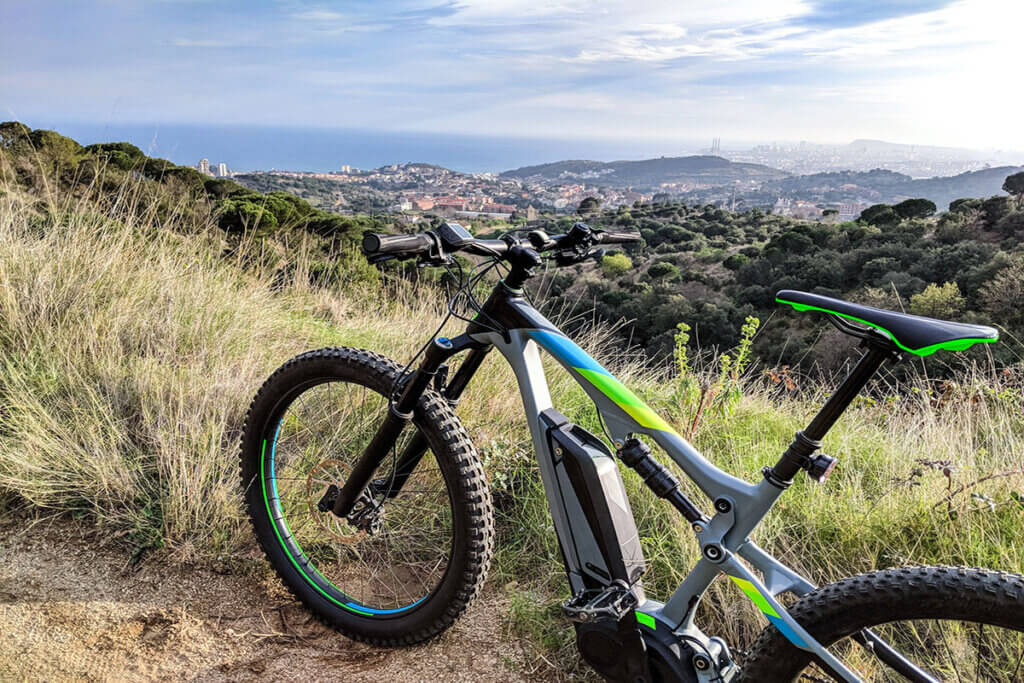
Other important purchase criteria
While suspension is extremely important, it isn’t everything when it comes to electric mountain bikes. Read on for an overview of the other crucial things to look out for when choosing a model.
Wheel and frame size
For a comfortable ride, you need to have the correct frame size for your height. Most manufacturers produce their bikes in four or five different frame sizes, and you’ll be able to check the measurements online. Some websites even have a tool which will help you choose the right size by inputting your height and leg measurements. While 26-inch wheels were common on mountain bikes a few years ago, nowadays most bikes come with either 29 or 27.5-inch wheels.
Total weight capacity
Most e-mountain bikes can carry up to 260 pounds (120kg). This is just a guideline, and you can get some bikes for heavier riders too – sometimes up to 440 pounds (200kg). Make sure to check the capacity, as some motors will break if the load is too heavy.
Weight
Due to their motors, electric mountain bikes are significantly heavier than normal ones. Top-end models weigh around 45 pounds (20 kg), but E-MTBs that weigh up 65 pounds (30 kg) are also common in less expensive price brackets.
Motor
E-mountain bikes tend to have one of two kinds of drive: either a mid-mounted motor at the bottom bracket or a rear motor at the rear wheel hub.
Most models have a bottom bracket motor. The reason for its popularity is that the motor unit is largely protected when it is there. In addition, the ride feel stays similar to a normal bike, because the extra weight is pretty much at the centre of gravity of the bike.
Gears
There are two types of gears: hub gears and derailleur gears. A hub gear usually has fewer gears to choose from, but since it is integrated within the wheel, it has the advantage of not getting as dirty as an external rear derailleur. On the other hand, derailleurs offer a wider range of gears. This makes them a better option for steep uphill climbs and fast descents. Derailleur gears can either be mechanical or electronic. Electronic gears are sometimes faster and require less effort to maintain, but they are expensive and can be sensitive if used in tough terrain.
Battery
The most important factor of any e-bike battery is its capacity: the higher the capacity, the longer you can ride with the motor helping out. Manufacturers usually specify watt-hours (Wh), sometimes also ampere-hours (Ah) or volts (V). Batteries between 300 and 600 watt-hours are common.
You should always take the manufacturer’s stated range with a pinch of salt, as range always depends on the riding style. Wind and weather also play a role in battery longevity. To avoid unpleasant low juice surprises on the road, every battery has a charge indicator similar to the fuel gauge in a car. This said, if your battery suddenly runs out on the road, you can still pedal home as normal.
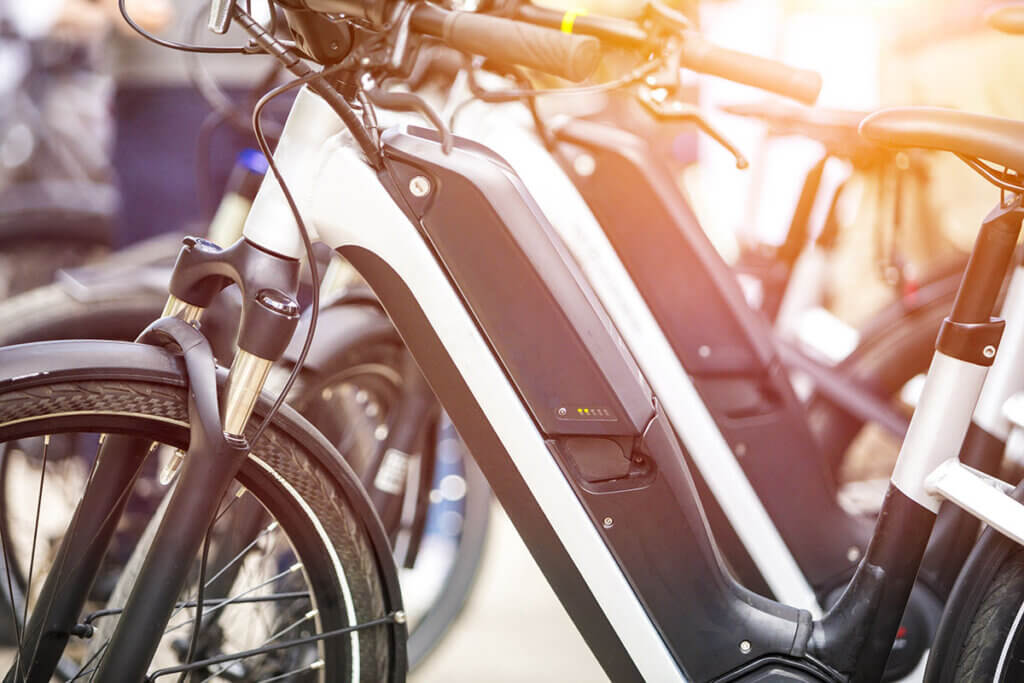
The greater the capacity of the battery, the longer the charging time. Due to the long service life of today’s lithium-ion batteries of 7,000 to 10,000 charging cycles, you’ll only need to replace the battery in exceptional cases.
Brakes
Rim brakes have largely become obsolete on mountain bikes – it’s very rare to find them on anything other than entry level models. Instead, most manufacturers use disc brakes. These can either be mechanical or hydraulic. Disc brakes are much more reliable, especially in wet and dirty conditions. They also mean that your wheels will last longer. This is because the pads on rim brakes wear down the rims over time. You need less force to pull the hydraulic disk brakes which means your braking distance is shorter.
Brake discs have different diameters. As a rule of thumb, the larger the brake disc, the stronger the braking effect. 8-inch diameter discs (203 mm) are standard on the front wheel, while some manufacturers use 7-inch (180 mm) discs at the rear.
Other features
The most important component of a bicycle is the frame – this also applies to electric mountain bikes. Aluminum has proven itself as a frame material, although more expensive bikes are made of carbon. Carbon fibre has the advantage of being lighter and stiffer, but can break irreparably in heavy crashes. Given the higher overall weight of electric mountain bikes, having a somewhat lighter frame does not have as much of an effect as say on a road bike.
Pre-mounted mudguards are usually not included, but there are inexpensive aftermarket options you can mount on the rear triangle, seat post or down tube.
Some countries require a lightning system for road use – even in broad daylight. But this doesn’t necessarily have to be permanently mounted and can be equipped as needed. Check with your local authorities about the road traffic regulations in your area.
Because they are designed for sport, luggage racks are not usually included on electric mountain bikes.
A starting aid is a useful option for bringing the bike up to walking speed from a standstill, which helps on steep climbs after dismounting.
A handlebar-mounted display provides important riding data such as speed, distance covered and battery charge. More expensive bikes sometimes have displays with integrated GPS navigation systems.
How much do you have to spend on an e-mountain bike?
As with all other types of bike, electric mountain bikes can get seriously expensive. Some high-quality e-mountain bikes cost as much as a small car. In the hardtail category, pricing starts at around $2000. For full suspension bikes, prices are somewhat higher, starting at around $2500. Be careful with bargains and offers. If you don’t do the proper research, you might end up with a bike that has low quality components. Many workshops also refuse to repair discount bikes, as they are concerned about safety.
Image 1: © Uwe / stock.adobe.com | Image 2: © PR_DE / stock.adobe.com | Image 3: © mmphoto / stock.adobe.com

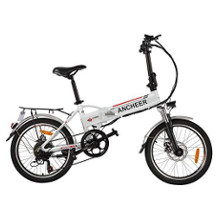
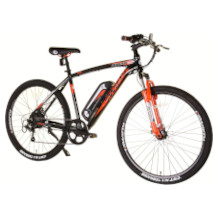
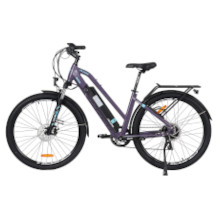
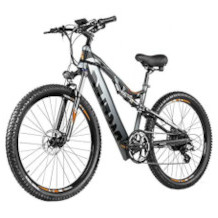
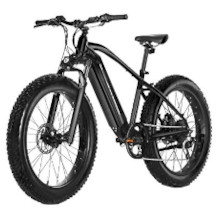
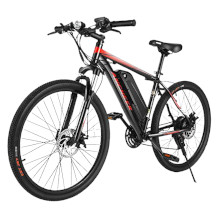

 no reviews
no reviews